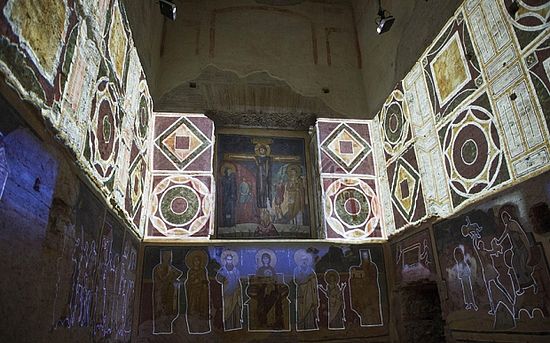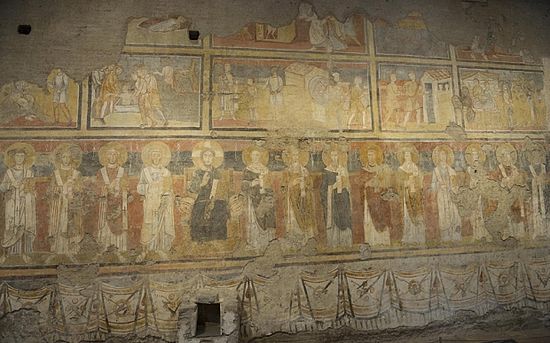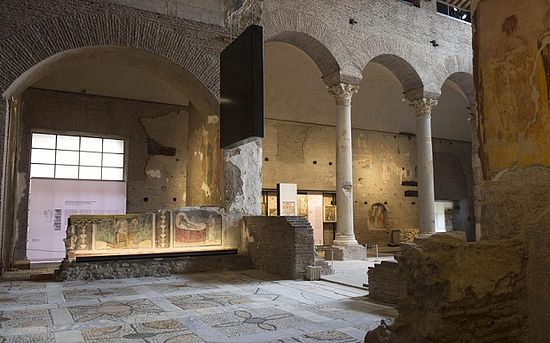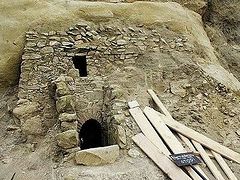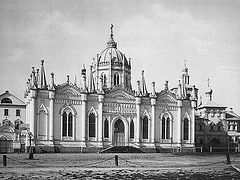Source: The Telegraph
March 23, 2016
A 1,500-year-old church which was buried under debris from an earthquake for more than a millennium has reopened to the public after a painstaking restoration of some of the world’s earliest Christian art.
The sixth-century church of Santa Maria Antiqua is located in the ancient Roman Forum, at the bottom of the Palatine Hill, where Roman emperors lived for centuries in sumptuous palaces.
It was buried under rubble by an earthquake in AD 847 and was only rediscovered in 1900 during archaeological excavations.
It has taken more than 30 years to restore its exquisite interior, which is decorated with multi-coloured frescoes of saints, martyrs, angels and emperors.
The project, which was funded by the Italian government and the World Monuments Fund, cost £2 million.
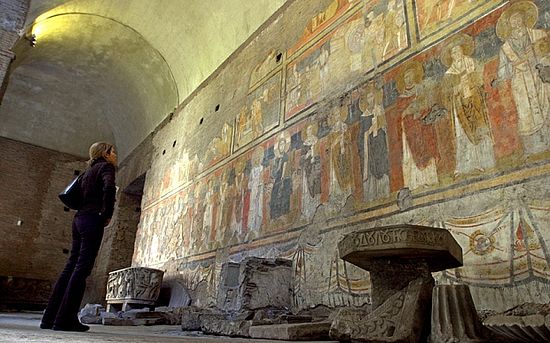 A visitor looks at a fresco, Christ on throne with Saints, believed to date back to 757 A.D., in Santa Maria Antiqua monument Photo: AP
A visitor looks at a fresco, Christ on throne with Saints, believed to date back to 757 A.D., in Santa Maria Antiqua monument Photo: AP
"This church is the Sistine Chapel of the early Middle Ages," Maria Andaloro, an art historian involved in the project, told Reuters.
"It collected the very best of figurative culture of the Christian world between Rome and Byzantium."
Being buried by the earthquake saved the church from being altered in later centuries, particularly during the Counter-Reformation, said Prof Andaloro.
Among the most significant frescoes is a depiction of the Virgin Mary with child - one of the oldest known Christian icons in the world.
After the ninth century earthquake it was moved to another church in Rome but it has now been returned to Santa Maria Antiqua.
Christian iconography was often superimposed on earlier Byzantine art - a depiction of the angel Gabriel telling Mary she had been chosen to be the mother of Christ was painted on top of a Byzantine queen, for instance.
The church was built inside a vast complex of Roman buildings which were constructed in the first century AD under the rule of the Emperor Domitian.
“It is unique, not just among the hundreds of churches in Rome but also in the whole of Italy,” said Francesco Prosperetti, Rome’s superintendent of archaeology.
“It represents a forgotten period in the history of the Forum because of the earthquake that buried it.”
The main frescoes, decorating the walls of the central nave and presbytery, were painted under Pope Martin I, who led the Church from 649 to 655 AD.
Further frescoes were ordered to be painted by Pope John VII (705 to 707 AD), who had a great affection for the church – his father helped managed the imperial palaces and he had been raised on the Palatine Hill.
The church lies close to the entrance to a large underground passageway that allowed the emperors and their retinues to pass unseen between their hilltop palaces and the Roman Forum.
The 2,000-year-old “imperial ramp” was opened to the public for the first time in October.
Originally more than 300 yards long, it consisted of seven zigzag ramps, four of which remain today.
The ceiling of the passageway is so high that emperors could easily have passed through it on horseback.
Like the church of Santa Maria Antiqua, it too was rediscovered in 1900.

